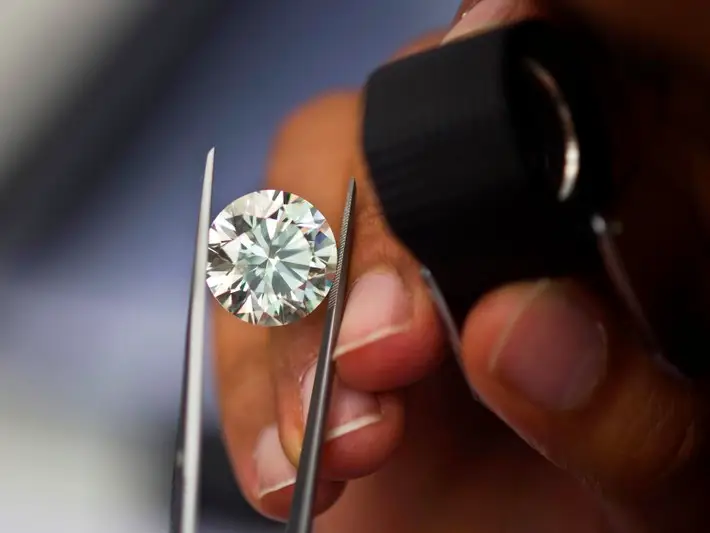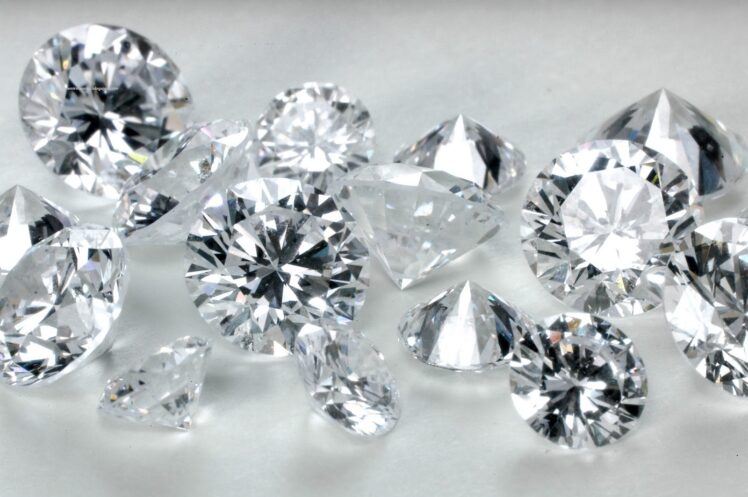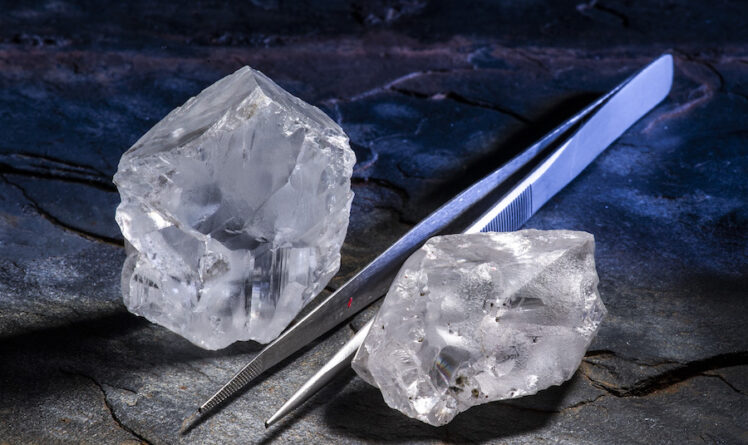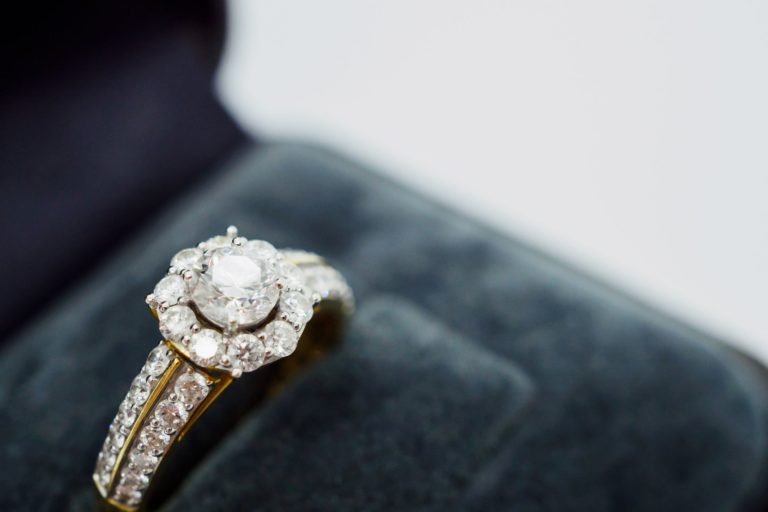In the glittering world of gemstones, diamonds shine the brightest. These precious stones symbolize love, commitment, and enduring strength. However, behind the sparkle often lies a trail of ecological disruption and human suffering. Today, as consumers become increasingly conscious of their buying power’s ecological and ethical impact, the demand for sustainability and ethical practices within the diamond industry has skyrocketed.
Choosing ethical and sustainable diamond jewelry is more than a commitment to social responsibility; it’s about creating a transparent, traceable path from the mine to the market, ensuring every step is contributing positively to the communities and environment it touches. Here, we delve into how informed choices about diamond jewelry are not just a statement of style, but of integrity and responsibility.

Source: canva.com
Contents
- Know The Source: Traceable Diamonds Are Ethical Diamonds
- The Allure Of Lab-Grown Diamonds
- Fair Trade Gold And Beyond: The Complete Picture
- Certifications And Standards: Your Ethical Assurance
- The Power Of Second-Hand Sparkle: Vintage And Antique Diamonds
- Consumer Advocacy: Demand Transparency
- Supporting Innovative Practices And Sustainable Technology In Mining
- Conclusion
Know The Source: Traceable Diamonds Are Ethical Diamonds
The journey of a diamond from deep within the earth to the prong of a shimmering engagement ring is long and complex. Historically, this journey has been tainted by bloodshed, conflict, and exploitation, leading to the term ‘blood diamonds’ or ‘conflict diamonds.’ These are stones sourced from war-torn areas, where the diamond trade funds armed conflict against governments.
Ethically sourced diamonds, however, have a transparent supply chain. Retailers and brands dedicated to ethical practices can provide detailed information about where their diamonds come from and the labor practices in those locations. For example, Diamonds on Richmond’s brother and sister duo have made it their mission to ensure every shimmering stone they sell is from conflict-free zones, under conditions that support workers’ rights, and contribute to community development. Knowing your diamond’s origin is the first bold step toward responsible ownership.
The Allure Of Lab-Grown Diamonds
Scientific advancement has presented a sparkling alternative to traditional mining: laboratory-grown diamonds. These stones are virtually identical to their natural counterparts, not only in composition but also in their mesmerizing allure. They are grown in controlled environments using cutting-edge technology that replicates the earth’s natural diamond-producing conditions.
Opting for lab-grown diamonds is a sustainable choice. These diamonds have minimal environmental impact, needing significantly fewer resources and producing less waste than traditional diamond mining. They also eliminate the humanitarian issues linked to conflict diamonds, offering peace of mind that your beautiful stone is untainted by human suffering.

Source: allurez.com
Fair Trade Gold And Beyond: The Complete Picture
Sustainability in jewelry extends beyond the gemstone. The metal setting of your diamond should be as ethically sourced as the stone itself. Fairtrade gold, recycled platinum, and other responsibly sourced metals help complete the picture of a truly ethical piece of jewelry.
Fairtrade metals ensure small-scale mining communities receive fair payment and support for their hard work. It also guarantees investment in local community projects and strict adherence to environmental protections. Choosing a setting made from recycled metals also reduces demand for newly mined metals, curbing destructive mining practices and reducing toxic waste and water usage. This holistic approach ensures every aspect of your jewelry supports the betterment of communities and the environment.
Certifications And Standards: Your Ethical Assurance
How can you be sure that your diamond is genuinely ethical? Certifications and standards are one way to confirm your jeweler’s claims. Institutions like the Kimberley Process, the Responsible Jewellery Council, and the Initiative for Responsible Mining Assurance offer certifications that require strict adherence to human rights, environmental impact, and transparent sourcing.
When purchasing a diamond, look for information about these certifications. A trustworthy jeweler will prioritize these credentials as part of their commitment to ethical sourcing and should be transparent and forthcoming with this information.
While no system is perfect, and criticisms have been leveled at some institutions for not being stringent enough, these certifications are currently the best tools consumers have to gauge a diamond’s ethical standards.

Source: gemonediamond.com
The Power Of Second-Hand Sparkle: Vintage And Antique Diamonds
Another way to embrace sustainability is by giving pre-loved jewelry another chance to shine. Vintage and antique diamonds have a charm and history that new stones simply don’t possess. By choosing a second-hand diamond, you’re not just buying a piece of history; you’re making an environmentally sound choice.
No additional mining or labor is required for a vintage piece, making it an inherently ethical option. It reduces the overall demand for new diamonds, decreasing the industry’s negative social and environmental impact. Plus, every vintage or antique piece is utterly unique, carrying stories from its previous life.
Consumer Advocacy: Demand Transparency
Finally, never underestimate your power as a consumer. The choices you make drive change in industry practices. If more people start demanding ethical sourcing, more retailers will be forced to consider where they source their diamonds and under what conditions they are mined.
Ask for details about sourcing, labor practices, and environmental impact. If your jeweler can’t or won’t provide this information, consider it a red flag. Transparency in the diamond industry is crucial, and your advocacy for ethical practices contributes to a larger movement pushing for change.

Source: mining.com
Supporting Innovative Practices And Sustainable Technology In Mining
Beyond the sourcing and certification of diamonds, another aspect that ethical consumers can focus on is supporting brands that invest in innovative practices and technologies in the diamond mining industry. The process of extracting diamonds from the earth can be environmentally destructive, consuming extensive resources and significantly impacting the land, water, and air.
However, new technological advancements and innovative methods are being developed to mitigate these issues.
One of the promising advancements includes the use of renewable energy sources to power mining operations, significantly reducing the carbon footprint of these activities. Some companies are actively rehabilitating mining sites, ensuring that they restore the biodiversity and productivity of the land post-mining. Water recycling systems are another innovation, decreasing freshwater use and minimizing the pollution of local water sources.
Conclusion
Choosing ethical and sustainable diamond jewelry requires a conscious effort and informed decision-making. It’s about recognizing your role in a larger narrative that values human life, community welfare, and environmental preservation. The gleam of a diamond should reflect the beauty of the process that brought it to you, free from the shadows of unethical practices.

Source: lumleyinsurance.com
Whether you’re captivated by the responsible allure of lab-grown diamonds, charmed by the history in vintage pieces, or committed to supporting transparent, fair trade sourcing, your choice makes a difference. As consumers, we have the opportunity, indeed the responsibility, to demand change and transparency within the diamond industry. With each ethical purchase, we come one step closer to transforming the industry, ensuring that each diamond is not just a symbol of love, but of hope, integrity, and a commitment to a brighter, more sustainable future.
